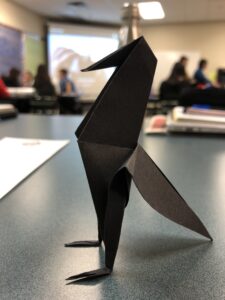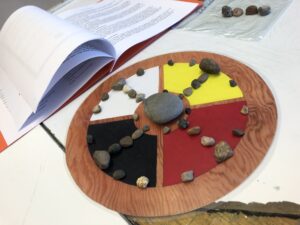
“It’s not about how many one person can make; it’s about how many people can make one.” – Bev Best, Manager; Aboriginal Student Engagement
First Nations Centre
Indigenous education is a significant part of Canadian education. The significance of teaching youth in their cultures, as well as utilizing native dialects to teach them, is today’s focus amid the discourse in society. The need for Indigenous education in Canadian schools, emphasized by indigenous youth. Indigenous education in schools would help Indigenous youth separated from their native societies. Including Indigenous education in the curricular doesn’t only help students of Indigenous descent but also non-Indigenous students. This paper will discuss the importance of Indigenous education in the Canadian curriculum.
Significant consideration must be paid to youth who are dropping out of school, to focus on introducing Indigenous culture and language to students. It is important to include native dialects into national curricula, there is a large number of Indigenous people that don’t speak their ancestor’s language. The curricular should be designed with materials connected to the social and educational needs of Indigenous people. The focus on multilingual teaching, ought to happen at all education levels, which would help Indigenous students to have a connection with their culture and be successful in their schooling.
The expression of culture is an important part of an Indigenous character and the country accepts that all Indigenous people have the right to acuminate and revitalize social norms and rules. Dialect is at the center of cultural identity, and the progression of native dialects is crucial to the development of Indigenous people’s knowledge. There are courses to advance the learning of the dialects and cultures of Indigenous people. It is extremely vital to protect and increase the cultural knowledge of both Indigenous and non-Indigenous people. The teaching of Indigenous languages and sharing stories from their cultures teaches students to be open-minded and understand others’ stories and history.
Education is a human right, even though according to the BNA Act (1867), education was not Indigenous people’s right. Today, the improved education for Indigenous people has its establishments within the resiliency of Indigenous communities. Canada develops support for Indigenous people through reconciliation and change. Every child, youth, grown-up and senior citizens have the opportunity to create their contribution to reconciliation and change. That implies that all community individuals can contribute to society (Inborn and non-Indigenous) and are physically and mentally, knowledgeable and profoundly intelligent people.
The cultural and teaching qualities of Indigenous peoples of Canada have a large number of curricular activities, which focus on First Nations Principles of Learning. The educational techniques of Indigenous people share a few similarities: relationship with the environment, visual representations, mini-lessons with hands-on exercises, individual assessments and instructions, associations to life experiences, multi-curriculum questions, group discussions, suitable utilize of humour, and land-based learning. The classroom involvement for students has to start with a shared understanding of what is considered as learning. The inclusive instructions have to be considered and understood. Indigenous teaching methods and individually instructive and interconnect the inclusive viewpoints of students’ achievement.
The First Peoples Principles of Learning must be introduced into teaching and learning every day. Those principles include topics such as diversity, and differentiated learning is a foundation for students’ success; learning is linked to students’ lives and experiences. Some changes have to be made in order for education to follow the First Peoples Principles of Learning. Some of the changes must include classroom management; it has to focus on community building and relationships. Schools must establish safety for everyone, as it is a priority. Schools have to support inclusion and respect everyone. The vital part of changing is deconstructing the hidden curriculum. It teaches students lessons about social norms, gender relationships, prejudices and rules. The hidden curriculum must be a concerning factor as it contributes to students’ understanding of the world, and sometimes that understanding is wrong.
The importance of introducing Indigenous education into the curriculum lets students accept other viewpoints, learn about the culture of the land they live on and be open-minded. It offers instructors, students and guardians the chance to educate themselves using First Nations Principles of Learning. These principles teach about the impact of Elders, understanding the importance of community, educating by sharing stories, learning about history and culture, the connection to nature, and the family connections. Students learn about their environment in a new way and the hidden meanings in the stories shared by Elders. Expanding lesson activities with Indigenous education can help students with forming associations between their very own lives and the learnt material. Introducing Indigenous culture into educations opens new ways for learning, such as sharing circles, learning through stories and games. Indigenous education is essential to be introduced as children succeed more in their own cultures.
